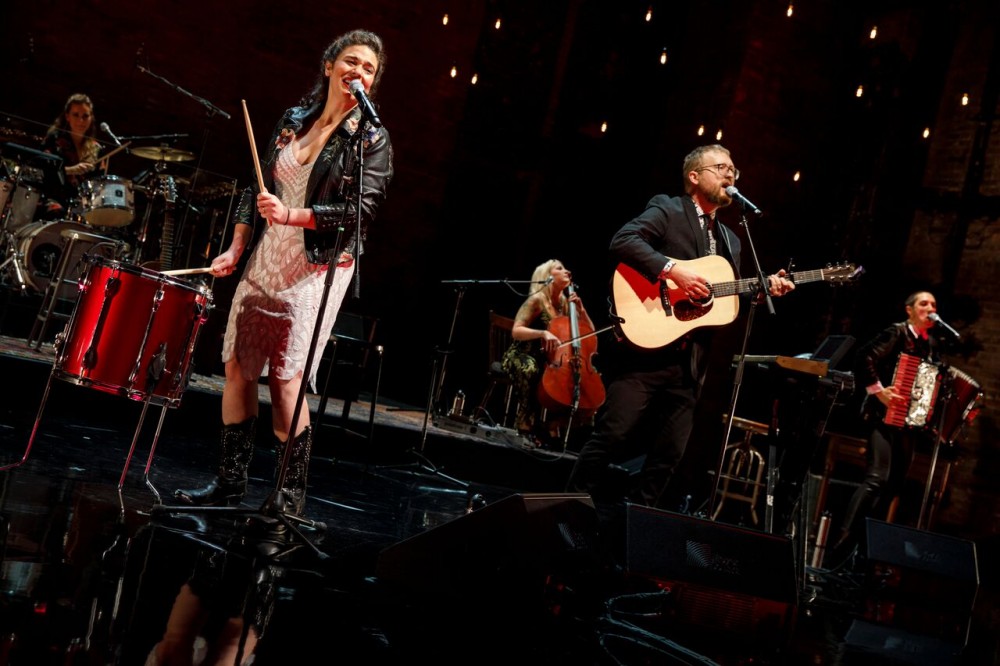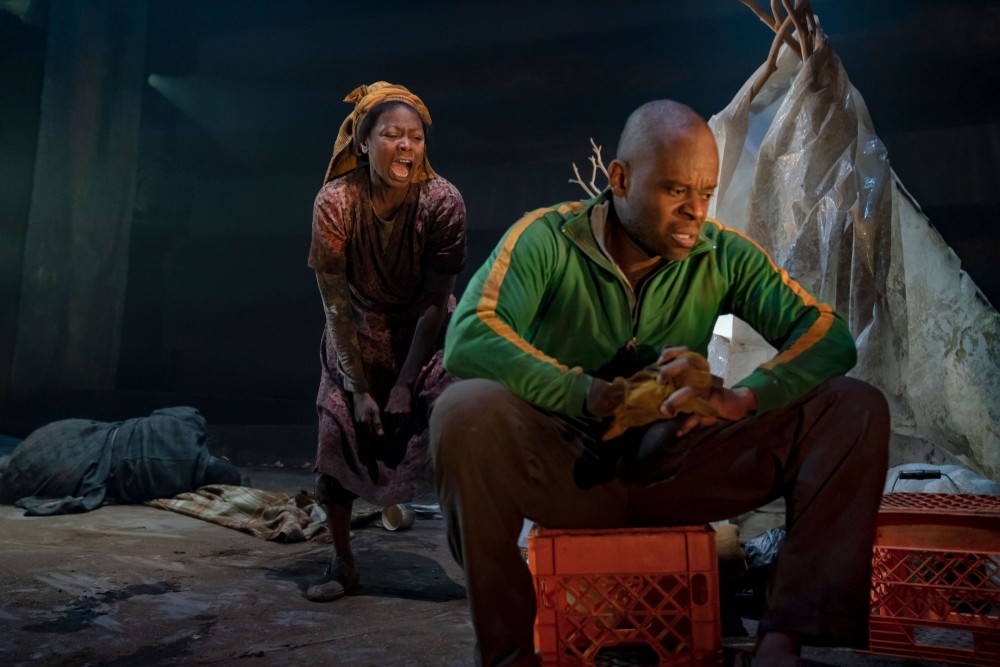by: JK Clarke
When you have dueling productions of Romeo & Juliet in the same town (a mere 30 blocks from one another, no less), as we have now, one would expect each production to have its own individual strengths and weaknesses. But one would hardly expect that both productions would suffer dearly from a lack of strong leading actors. However, as previously reviewed here, the Broadway show, despite its crowd-drawing star power, featured a charmless Romeo and a milquetoast Juliet. Unfortunately, the competing production, at Classic Stage Company through November 10, fares no better. The Broadway version at least, despite the lead shortfalls, was a compelling production. The same cannot be said of CSC and director Tea Alagic’s Romeo & Juliet.
CSC’s R&J attempts many of the same things: modernizing, creating a minimalist hip environment, editing the text for time, and featuring marquee names. TV and film darling Elizabeth Olsen (she the younger sibling of the famous Olsen Twins) provides the youth market draw and Daphne Rubin-Vega is another recognizable face from TV and film (as well as Broadway). Unfortunately, whatever they and the other very accomplished actors in the ensemble could have provided was lost in the play’s poor artistic and directorial choices.
This Romeo starts off strong, eschewing the Chorus’s powerful “Two households, both alike in dignity . . .” speech for a line-up of members of both houses, a red laser light forebodingly dividing them down the middle. When they square off for the opening confrontation in the village square, however, we see that rather than two noble households at odds, we seem to have characters from the Jersey Shore (Kathryn Meisle’s Lady Capulet and her matching leopard print blouse and stilettos is Peg Bundy meets Carmela Soprano) facing off against a group of bearded- ironic t-shirt wearing- hipsters from East Williamsburg (Emmy nominated T.R. Knight’s Mercutio looks like he’d be more comfortable brooding over a Jameson in a Grand Street dive). The character derivations bend even more crazily from there. In one of the most inexplicable directorial choices ever, Juliet’s Nurse (Daphne Rubin-Vega), is played as a gum-chewing mamacita who seems to interject “Dios Mio!” into every third sentence. And through her comical, thick Charo-esque Spanish accent, the rest of the Nurse’s lines (and beautiful, clever speeches) are all but lost on the audience; this is wholesale character assassination.
As for the title characters, it’s not that Julian Cihi (Romeo) doesn’t give an all out effort. He plays Romeo as earnestly as he can, but he doesn’t quite seem suited to the task, especially considering the manic tone of the play; and Elizabeth Olsen doesn’t throw any power behind Juliet’s speeches. Olsen has wonderful, subtle movement and expression, but with Shakespeare the words are more important, and here she just doesn’t have command. She’d be better off in a David Mamet play, where she can bare her inner soul with a tilt of the head.
The production was not without its standouts. McKinley Belcher III adds dimension to Benvolio where it’s not usually noticed. He’s a street fighter, but torn by his earnest loyalty to his friend Romeo and his desire to see him safe and happy. David Garrison plays a strong, powerful Lord Capulet and Daniel Davis is simply outstanding and utterly convincing as conflicted and caring Friar Laurence.
While 2013 may be the year of the Bard in New York City, one thing has made itself clear: star power and larger company production do not the play make. Some of the better Shakespeare this year (Philstock’s Under the Greenwood Tree, a musical take on As You Like It, and Shakespeare Forum’s Love’s Labour’s Lost) were done by small, passionate, Shakespeare-loving companies who were able to get at the heart of what makes these plays great. Throwing money and names at them does not.
*Photo: Joan Marcus
Romeo & Juliet. Through November 10 at Classic Stage Company (136 East 13th Street, between Third and Fourth Avenues).www.classicstage.org
























